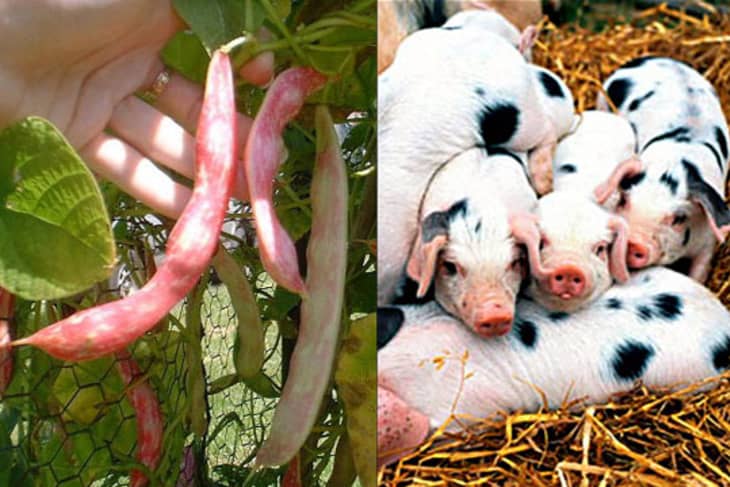Heirloom, Heritage … What Does It Mean?
These days, shoppers have the option of choosing heritage or heirloom foods. But what do these words mean and how do they affect you? You may be surprised to learn it isn’t just a frivolous fad; our food supply depends on them.
Through the history of civilization, humans have raised a variety of livestock and agriculture. However, today’s large-scale industrial farming methods only use a few specialized breeds that have been developed to meet certain requirements. For example, large-scale produced turkeys have been bred to have bigger breasts. As a result of these farming practices, thousands of non-commercial animal breeds and crop varieties have died out. When they die out, they take their genetic diversity with them. In the last century, nearly 75% of the genetic diversity in our food supply has been lost.
Genetic diversity is essential to protecting our food supply. If we only raise a few breeds or grow a few varieties of crops, and if they all get wiped out by a disease, we won’t have any food left. When a pathogen gets in the food supply, it’s important to have a large genetic diversity because some breeds will survive. The smaller the genetic diversity in our food supply, the smaller our chances are of surviving famine. This is what happened during the Irish Potato Famine when a million people planted one variety of potato in their backyards, and to the Gros Michel banana.
These days, sustainable farmers have been raising heritage and heirloom breeds and crops in order to preserve their lineages. Simply raising them is not enough; in order for them to survive, there must be demand for them. So, to keep from losing more variety in animals and crops, we must eat them.
Plus, don’t you get excited trying new foods that you haven’t had before? Foods such as Pawpaws, ground cherries, heirloom eggplants, and heirloom potatoes have a lot of flavor and different colors and textures that liven up any plate. Heritage turkeys and heritage pigs are not only lower in fat and better for you, they also taste so much better than non-heritage meats.
Heritage often refers to animals. Heritage breeds are traditional breeds of animals that were raised for food in the past, but their numbers dwindled during the rise of industrial agriculture. In the last 15 years, almost 200 breeds of farm animals have gone extinct worldwide.
Heritage breeds are better adapted to withstand disease and live in open pastures. They don’t need constant doses of antibiotics or temperature-controlled interiors the way that factory farmed animals do. If heritage breeds are allowed to die out, future farmers will be unable to use their unique genetic material to breed animals with the traits that make them sustainable.
Some heritage breeds take longer to grow to market weight or do not produce as much milk or eggs as some breeds, which is why they were never selected for factory farming. But these breeds are often more delicious, so the wait is often worth it.
To be considered a heritage breed, an animal has to have unique genetic traits and be raised on an organic and sustainable farm.
Some heritage breeds include:
Pigs
• Berkshire
• Tamworth – supposedly makes the best bacon
• Red Wattle
• Duroc
• Gloucester Old Spot
Turkeys
• Standard Bronze
• Bourbon Red
• Jersey Bluff
• Slate
• Narragansett
Sheep
• Tunis
• Katahdin
• Navajo-Churro
Beef
• Red Poll
• Dexter
Chicken
• Barred Plymouth Rock
• Dark Cornish
Rabbit
• Blanc de Hotot
• American Rabbit
Heirloom is used to refer to edible plant varieties that have been grown through the early parts of human history and are genetically distinct from commercial varieties and have unique colors, textures, and tastes not found in factory-farmed industrial produce.
Heirloom plants have generally been passed down through families that saved seeds through generations, or they came from seed banks.
Heirloom tomatoes aren’t considered economical for mass production because they don’t produce as much tomatoes per plant and don’t do well with harvesting machines. However, heirloom tomatoes taste ten times better than commercial hot house tomatoes.
Some common heirloom fruits and vegetables include:
• Fatali Pepper
• Chioggia Beet – also known as the “Candy Cane Beet,” it has rings of pink and white.
• Golden Midget Watermelon – has a golden rind and a pink interior.
• All Blue Potato
• Dinosaur Gourd
• Five-Color Silverbeet Chard
• Applegreen Eggplant
• Cherokee Trail of Tears Bean
• Scarlet Nantes Carrot
Where to find heritage meats:
Local Harvest
Heritage Foods USA
Lobel’s
Where to find heirloom produce:
Heirloom Seeds
Baker Creek Heirloom Seeds
Eat Well Guide
